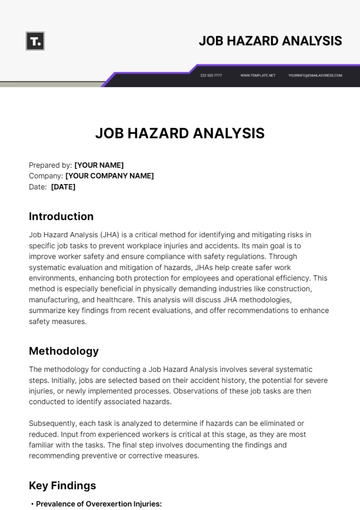Business Analysis White Paper
A Strategic Business Analysis
Prepared by: [YOUR NAME]
Company: [YOUR COMPANY NAME]
Department: [YOUR DEPARTMENT]
Date: [DATE
I. Executive Summary

The [Your Company Name] Business Analysis White Paper aims to provide a comprehensive overview of digital transformation trends, exploring their implications on the retail sector. This document outlines key findings, analyses, and recommendations derived from extensive research conducted by the Strategy and Analytics Department.
II. Introduction
A. Background
In recent years, the retail industry has witnessed significant shifts due to rapid advancements in technology. This section provides context by examining the evolution of digital transformation and its impact on retail stakeholders.
B. Objectives
The primary objective of this white paper is to:
Objective 1: Identify key challenges and opportunities within the retail industry.
Objective 2: Analyze consumer behavior trends to understand their implications.
Objective 3: Provide actionable insights for retailers to navigate the digital landscape.
III. Methodology
This section delineates the methodologies employed to gather and analyze data:
Data Collection: Utilized surveys and data analytics tools to collect relevant data sets.
Analysis: Employed regression analysis and predictive modeling to dissect data and draw meaningful insights.
Validation: Ensured the reliability of findings through peer review and validation by industry experts.
IV. Findings
A. Market Analysis
1. Market Trends
Online sales have seen a steady increase of 15% annually, outpacing traditional brick-and-mortar stores.
Mobile commerce is experiencing exponential growth, with a 40% year-over-year increase in mobile transactions.
Personalization and customization have emerged as key drivers of consumer purchasing behavior.
2. Competitive Landscape
Table 1: Key Competitors
Company | Market Share (%) | Key Offering |
|---|
Amazon | 30% | E-commerce platform |
Walmart | 20% | Omnichannel retail |
Alibaba | 15% | Global Marketplace |
B. Financial Analysis
1. Revenue Trends
E-commerce revenue has grown by 25% annually, contributing significantly to overall retail revenue.
Traditional retailers experienced a decline in revenue by 5% annually, highlighting the shift in consumer preferences.
2. Profitability Metrics
Table 2: Profitability Analysis
Metric | Value |
|---|
Gross Profit Margin | 40% |
Net Profit Margin | 12% |
Return on Investment | 18% |
V. Recommendations
A. Strategic Initiatives
Recommendation 1: Implement AI-driven personalization to capitalize on emerging opportunities in online sales.
Recommendation 2: Enhance omnichannel integration to improve customer experience and retention.
Recommendation 3: Foster partnerships with technology providers to address logistical challenges in last-mile delivery.
B. Operational Improvements
Recommendation 4: Streamline inventory management processes to enhance efficiency and reduce costs.
Recommendation 5: Invest in cloud infrastructure to support scalability and agility in digital operations.
Recommendation 6: Develop training programs to upskill the workforce in data analytics and digital marketing.
VI. Conclusion
In conclusion, the findings presented in this Business Analysis White Paper underscore the need for strategic adaptation in response to the digital transformation of the retail industry. By implementing the recommended initiatives, [Your Company Name] can position itself as a leader in the evolving digital retail landscape.

VII. References
Smith, J. (2023). The Future of Retail: Trends and Insights. Retail Insights Journal.
Johnson, L. (2022). E-commerce Trends Report. E-commerce Association.
White Paper Templates @ Template.net
































